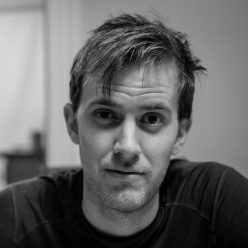Speaker: Owen Gwilliam (University of Massachusetts Amherst).
Title: Chern-Simons theory & quantum groups approached through factorization algebras
The mini-course will consist of three lectures.
Location/Time: All lectures will take place in 509/511 Lake Hall. (Northeastern campus map)
Lecture 1: Tuesday, October 23, 10:30 AM – 12:00 PM.
Lecture 2: Wednesday, October 24, 4:00 PM – 5:30 PM.
Lecture 3: Thursday, October 25, 1:00 PM – 2:30 PM.
Abstract: Over the last few decades, various mathematical communities have studied the three-dimensional topological field theory called Chern-Simons theory. Recently, ideas and methods from higher algebra have been applied to it. These lectures will give an introduction to such work, using it as an excuse to discuss some sophisticated ideas, like En algebras, factorization homology, or filtered Koszul duality. (We will not assume comfort with higher algebra on the part of the audience.) The focus will be on joint work with John Francis and Kevin Costello, which directly connects the Feynman diagrammatic approach (think: Vassiliev invariants of knots) to the quantum group approach (think: HOMFLYPT polynomials). We will also relate our approach to the recent work of Ben-Zvi, Brochier, and Jordan on “integrating quantum groups” and of Calaque, Pantev, Toen, Vaquie, and Vezzosi on categorical deformation quantization.
Below is a more detailed plan for the lectures.
- Lecture 1: Braided monoidal categories, Drinfeld’s classification of quantum groups with formal parameter, and the overall strategy. The aim is to articulate the central question addressed in joint work with Costello and Francis: how is perturbative Chern-Simons theory related to quantum groups? The talk is thus devoted to introducing Chern-Simons theory, a 3-dimensional topological field theory on oriented 3-manifolds that depends on a Lie group G, and to introducing the notion of a quantum group, which we approach via its braided monoidal category of representations and so depends, for us, on a Lie algebra and a choice of invariant symmetric bilinear form. We will gesture at the knot invariants produced by these two notions, such as the Bott-Taubes integrals versus HOMFLYPT polynomials, but will not discuss them in detail.
- Lecture 2: Chern-Simons theory, its quantization, its factorization algebra, and a one-dimensional defectThe aim is to explore algebraic structures produced by the perturbative quantization of Chern-Simons theories (CS). We will introduce factorization algebras and describe in detail the classical observables of CS in these terms. We will then outline of what perturbative quantization means and how it deforms the factorization algebra. A key ingredient will be a higher dimensional generalization of the Hochschild-Kostant-Rosenberg theorem, due to Calaque-Willwacher, which will put us in dialogue with the CPTVV approach to categorical deformation quantization.
- Lecture 3: The tangle hypothesis and the bridge by Koszul duality between the quantizations. The goal here is to indicate how (a class of) line defects can be encoded by stratified factorization algebras, and how this gives us a bridge to braided monoidal categories. Quantization of CS will thus determine a deformation of braided monoidal categories. We will discuss key tools—a filtered Koszul duality and a charged fermion—that will let us identify this deformation with a quantum group.
